- This topic has 0 replies, 1 voice, and was last updated 3 years, 6 months ago by Tony Gazley.
-
AuthorPosts
-
-
Tony GazleyKeymaster

Leatham Conservation Area
May 2022
Story and photos by Sarah Fisher
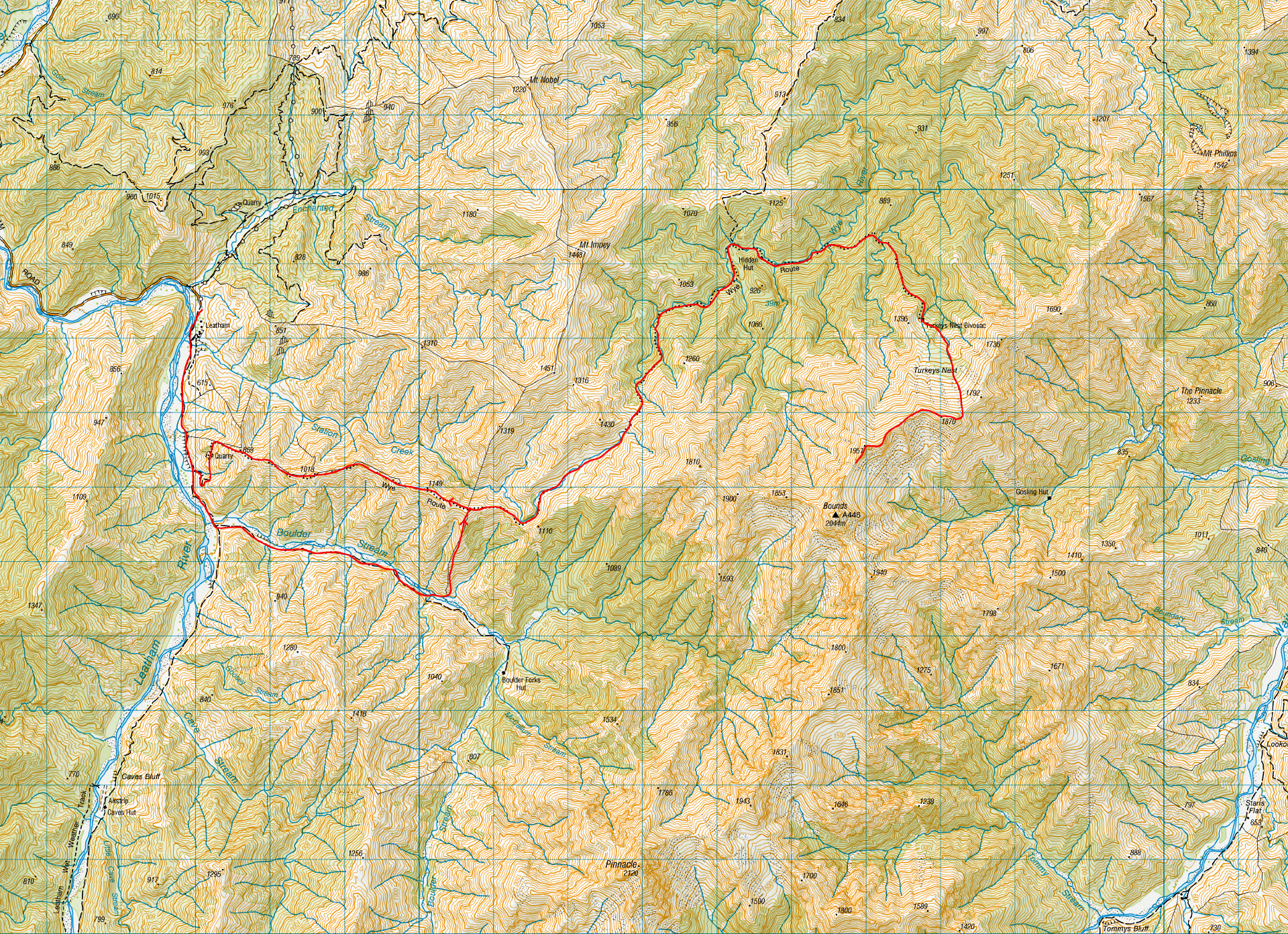
‘Do some mushrooms explode to spread their spores?’ Tony and I wondered aloud as we wandered along the Wye Route. We had returned to the Leatham Conservation Area again—two years ago we had a magical five-day tramp around the Leatham Circuit (see our story here).
We had camped the night at Kowhai Point Campsite in the Wairau Valley before packing up and driving to the end of the Leatham Road. The previous weekend’s polar blast had settled in the Leatham Valley and there was a beautiful frost that had coated everything. It was a winter wonderland. Puddles were frozen over and I had fun jumping in a few and watching them splinter while the bigger ones we had to edge very carefully around as the ice was so slippery. Tony tried ice skating across one.
We were joining onto the Wye Route from Boulder Stream to make it a bit more of a loop. After crossing the cold Boulder Stream and slithering under the barbed wire fence we joined up to the fenceline that we were going to be following up the hill (this fenceline is marked on the map so it is easy to locate). The climb up the steep hill initially felt like one step forward and two back as the frost made the grass very slippery. I wasn’t complaining though as I do love a good hill climb and we quickly warmed up especially once the sun came out. Surprisingly there was a random orange track marker in some bush near the top and we wondered if it was put there as a joke by someone as we weren’t on any track or route—but maybe enough people follow this fenceline up.
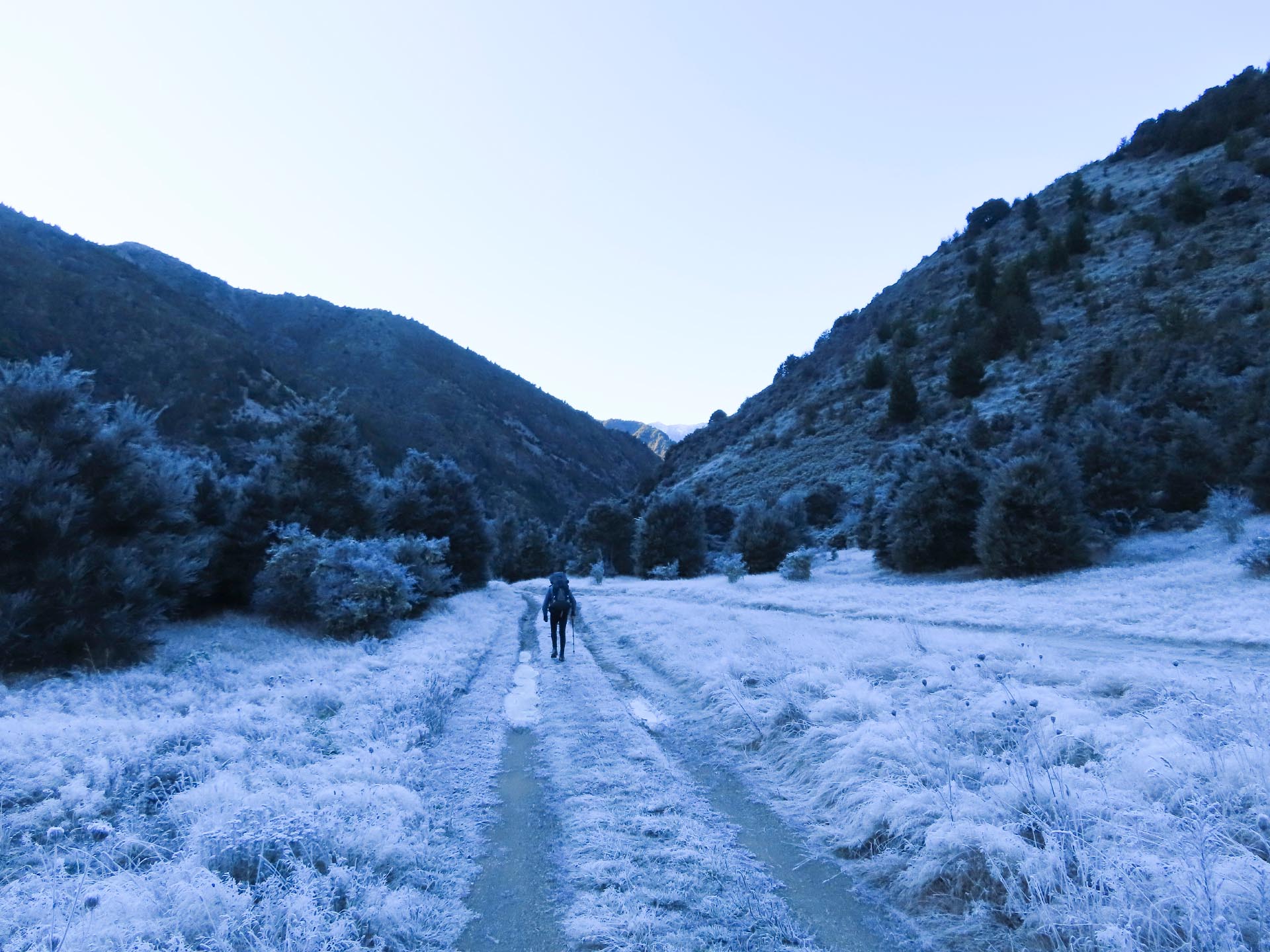
Frosty morning on the 4WD track up Boulder Stream 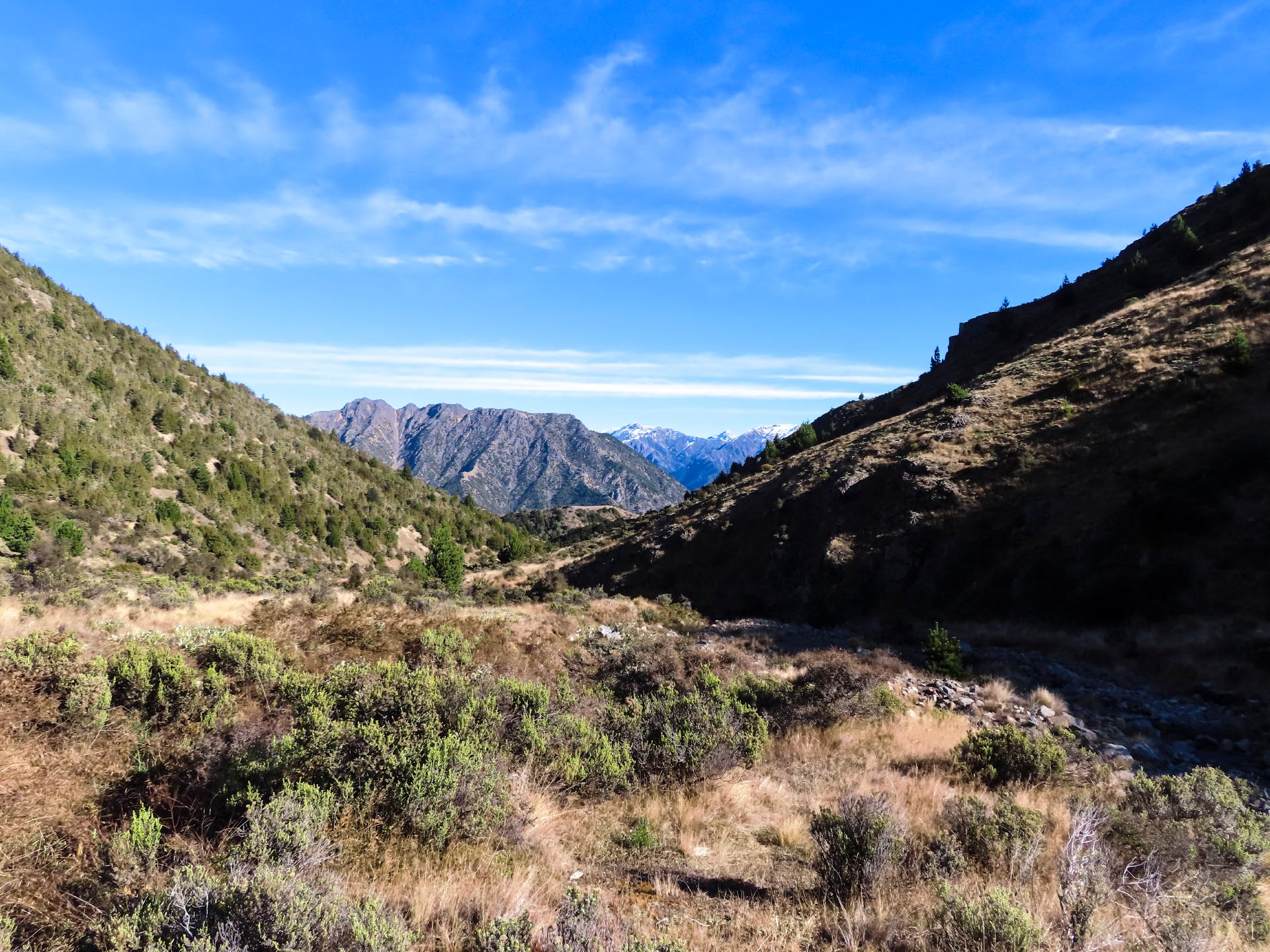
Station Creek on the way to the unnamed saddle to Wye River 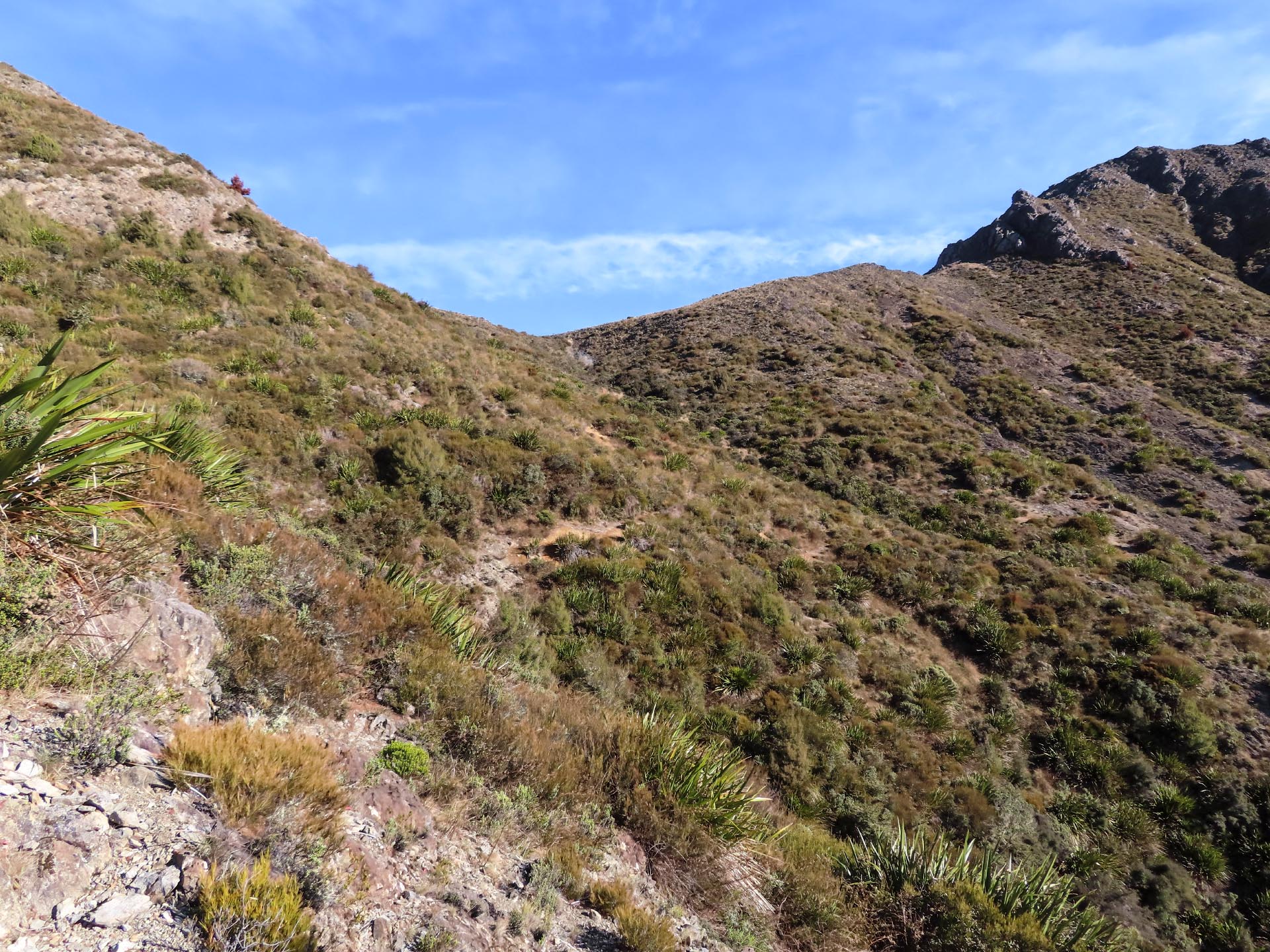
The Garden of Despair Once on the Wye Route it was a matter of following the valley up to the saddle. As we neared the Wye Route Saddle there were more patches of snow on the ground. I cracked the joke that we were now above the snow line and needed ice-axes and crampons—a long standing joke from our previous Leatham Circuit tramp. A big orange triangle marked the saddle itself and we were rewarded with spectacular views over to the Richmond Ranges. We then dropped down into what I named the ‘Garden of Despair’. It was full of spaniards, matagouri, and other prickly horrors. I lost the route through here a few times as the ground trail wasn’t well established and the markers were further apart. I think Tony sent me ahead as the sacrifice because he got entertained by all the shrieks and cursing as my legs got ripped to shreds and spaniards poked at me from every direction. After doing many trips with Tony and having my legs ripped to pieces so often I had finally gone out and got some gaiters and was wearing them for the first time. They definitely stopped my legs from getting absolutely shredded but I reckon those spaniards had timed their growth to perfection to get me just in the gap between my shorts and gaiter line.
It was a relief to escape out of the ‘Garden of Despair’ into a beautiful forest. There is something special about walking through a typical South Island beech forest with all the honeydew on the beech trees, the beech leaves littering the track and the moss—all the different shades of green. The best part of this was it was being accompanied by so much bird song. We had the constant chatter of toutouwai (South Island robins) and the song of the korimako (bellbirds) and they would frequently flutter down right in front of us. It was absolutely wonderful and one of the highlights of the trip for me.
We finally made it to Hidden Hut—maybe it wasn’t so well hidden given we had found it! I went to sign in the intentions book that we were continuing to Turkeys Nest Bivvy and got a surprise when I saw it was actually an old NZ Forestry Service Book. This immediately clued me onto the fact it must be fairly old, and on flipping to the front of the book I saw it dated back to 1986—older than me! All the visitors to the hut since then (36 years) were signed into a single hut book.
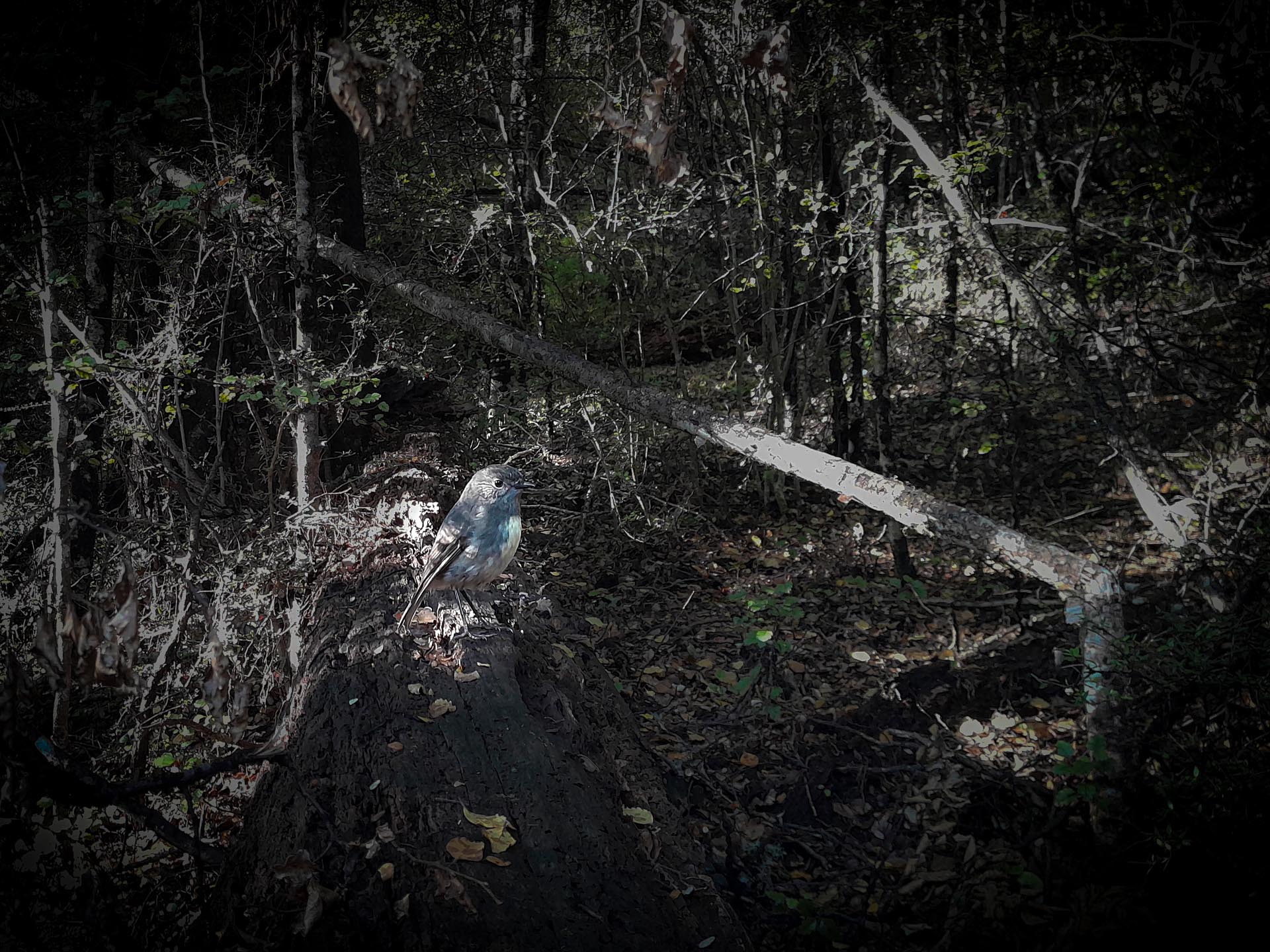
Friendly robin 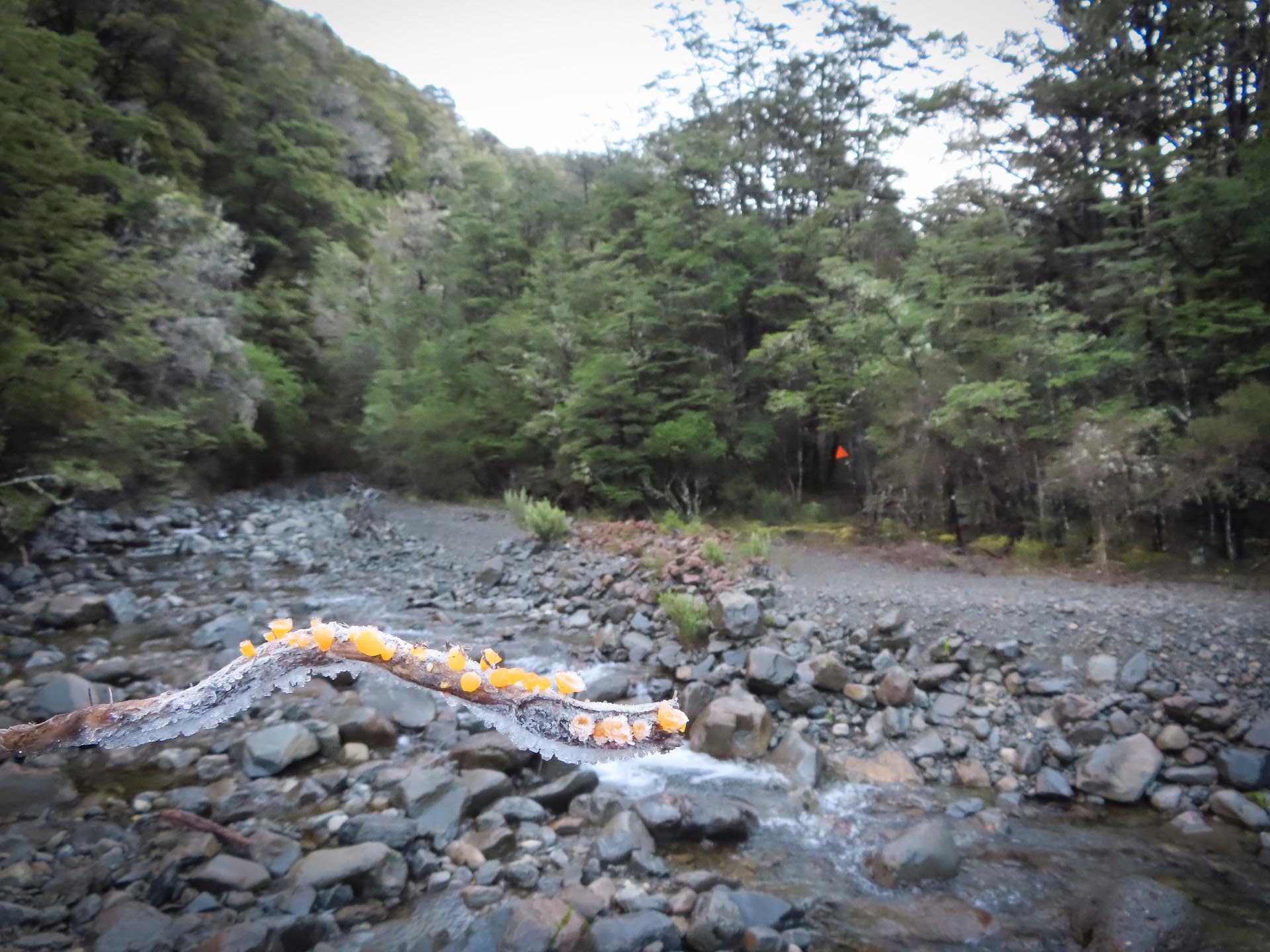
A new species of legless lizard After Hidden Hut there was a bit of clambering over tree fall and sometimes the track wasn’t immediately obvious so we were glad to be doing this part in daylight. I found a stick that was coated in frost with fungi frozen on it. With my over-active imagination I told Tony this was a ‘legless lizard’ after something that had happened at work. My boss had walked the Abel Tasman Track in the April school holidays and told us the story of how the weka got into her daughter’s bag and stole one of her snake lollies. They turned around just in time to see the weka running off with the snake in its mouth. Unfortunately, when my boss told us this story, my colleague had just done a night shift with me and got a bit confused and thought she meant a real snake; or a legless lizard; neither of which exist in NZ thankfully but we still joke about legless lizards as I didn’t realise legless lizards were actually a real thing.
Our final part of the day to get to Turkeys Nest Bivvy was a 500 m climb. Luckily as we climbed up the sky and Richmond Ranges glowed red with the sunset which provided a good distraction. We also got a big surprise when we heard the calls of a couple of kea! Kea aren’t particularly common this far north in the South Island anymore so it was a lovely surprise.
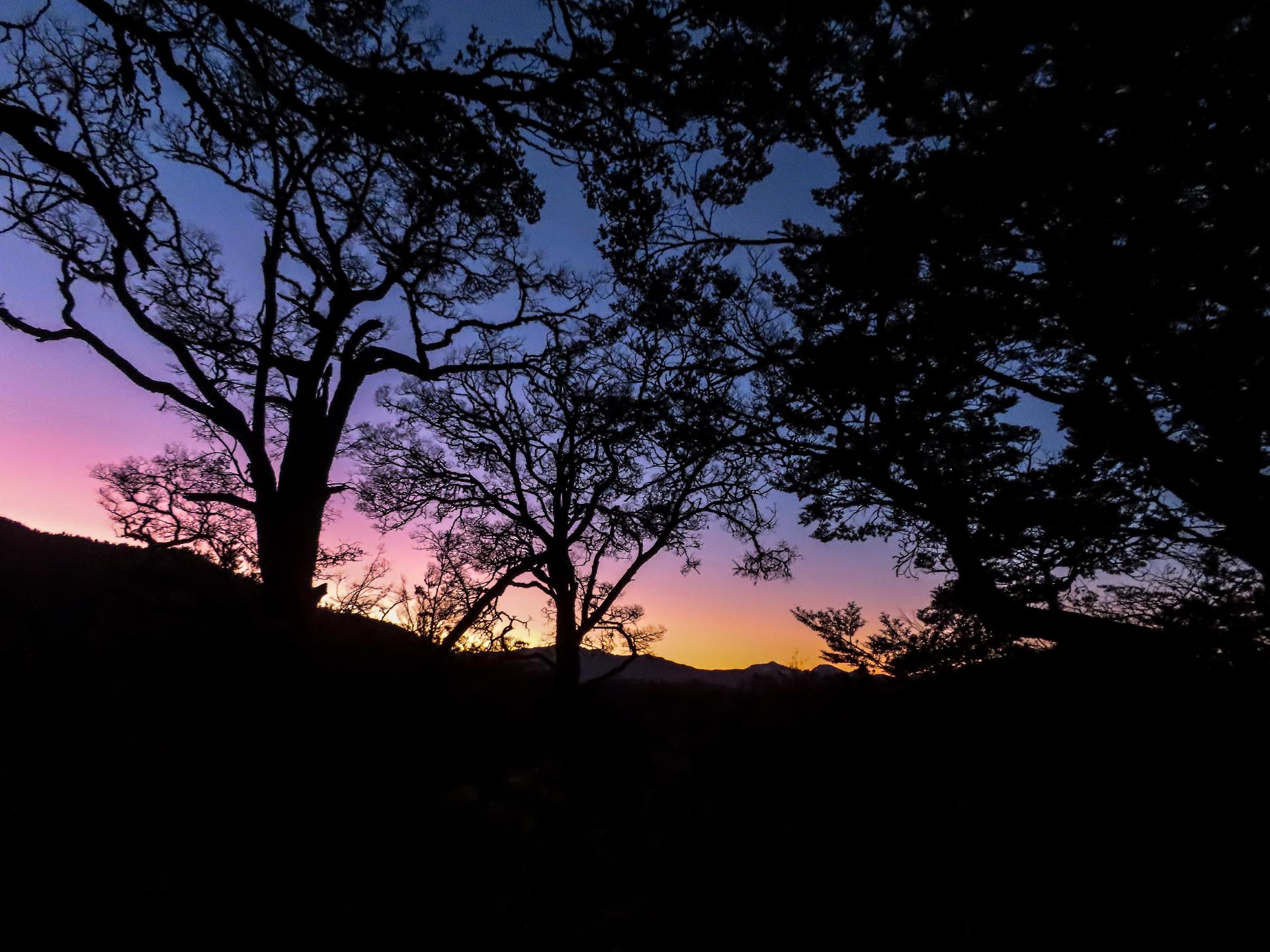
Sunset on the way to Turkeys Nest Bivvy After getting ourselves a bit stuck finding our way through some treefall in the dark, we finally arrived at the Bivvy. I nearly missed it as the track crossed the creek which is the water source for the Biv and I was looking up the hill rather than directly in front of me! Turkeys Nest Bivvy is like a cute little doll’s house. With two people and packs it required a fair bit of gymnastics and maneuverings to cook dinner and even get in and out the door. All good fun! Tony’s goal had been to get a fire going as he had never had a fire in such a small hut as most bivs don’t have a fireplace. Initially we got smoked out and had to open the door for ventilation but then once the fire was established, we got a nice cosy hut for the night. It was so warm that we actually had to open the window as well as the door!
We had another bluebird the next day. We took only day gear and followed the creek up to the Turkeys Nest and to the ridgeline, seeing a majestic stag along the way. The ground was frozen solid under the scree in places so it required careful navigation. Once on the ridgeline it became immediately obvious that the route to Bounds that Tony had in mind (the easiest way there) was now completely out of bounds due to too much new snow and ice in the gully we needed to descend. So, we decided we would follow the ridgeline as long as we could. We followed an old farming fence which Tony knew was there but had never been along. It seemed a bit spooky as it was hard to imagine sheep surviving up there as there was nothing but rock! It made me think about our recent tramp in the Kaweka Range where they had tried unsuccessfully to graze sheep high in the range (see our trip report here).
The spooky fence had its uses though as we had to use it in some places to haul ourselves up and over steep rocks. Eventually we got to spot height 1951 m and Tony started celebrating that he had probably made the summit of Bounds—he hadn’t looked at the map all day and thought he recognised the ridge to the west as the one he had looked up from the bottom—although he was concerned as to why there was no summit cairn.
Meanwhile, I was having quiet doubts that we were actually there as I knew the summit was marked on the map to have a trig and it didn’t seem like we had walked far enough. I pulled out my GPS and confirmed we were actually on the spot height rather than the summit. Now what to say to Tony? He quickly realised his mistake and wasn’t really disappointed—after all he had tried nine times before to climb Bounds with 34 different people including leading three club trips there over a period of 16 years! But that now just means another trip….
With too much new snow on the sidle in front of us going on was not an option so we sat on our spot height and just enjoyed it there before the cold wind got to us and we headed down again to Turkeys Nest Biv for lunch.
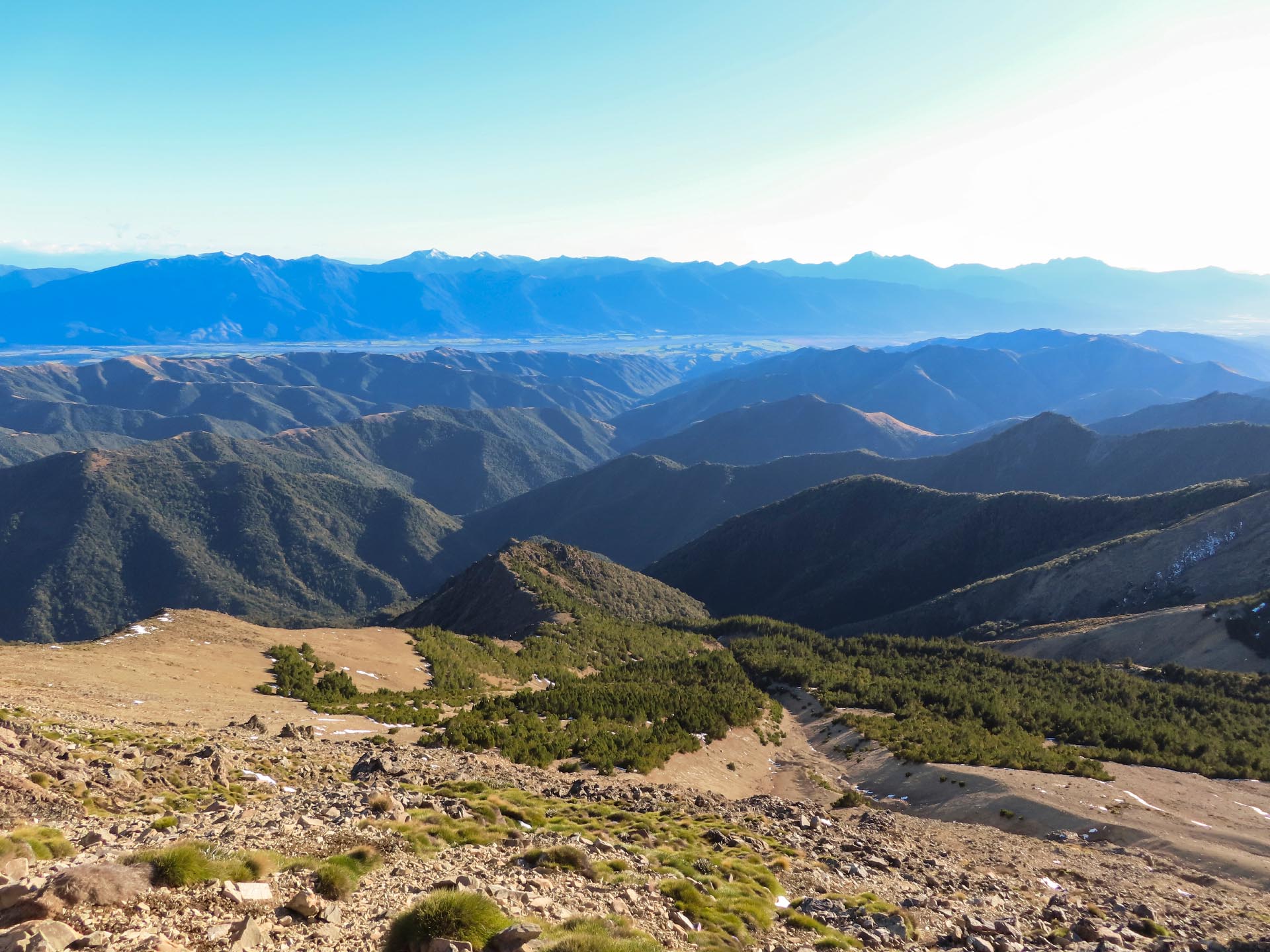
Climbing to the ridge above the bivvy 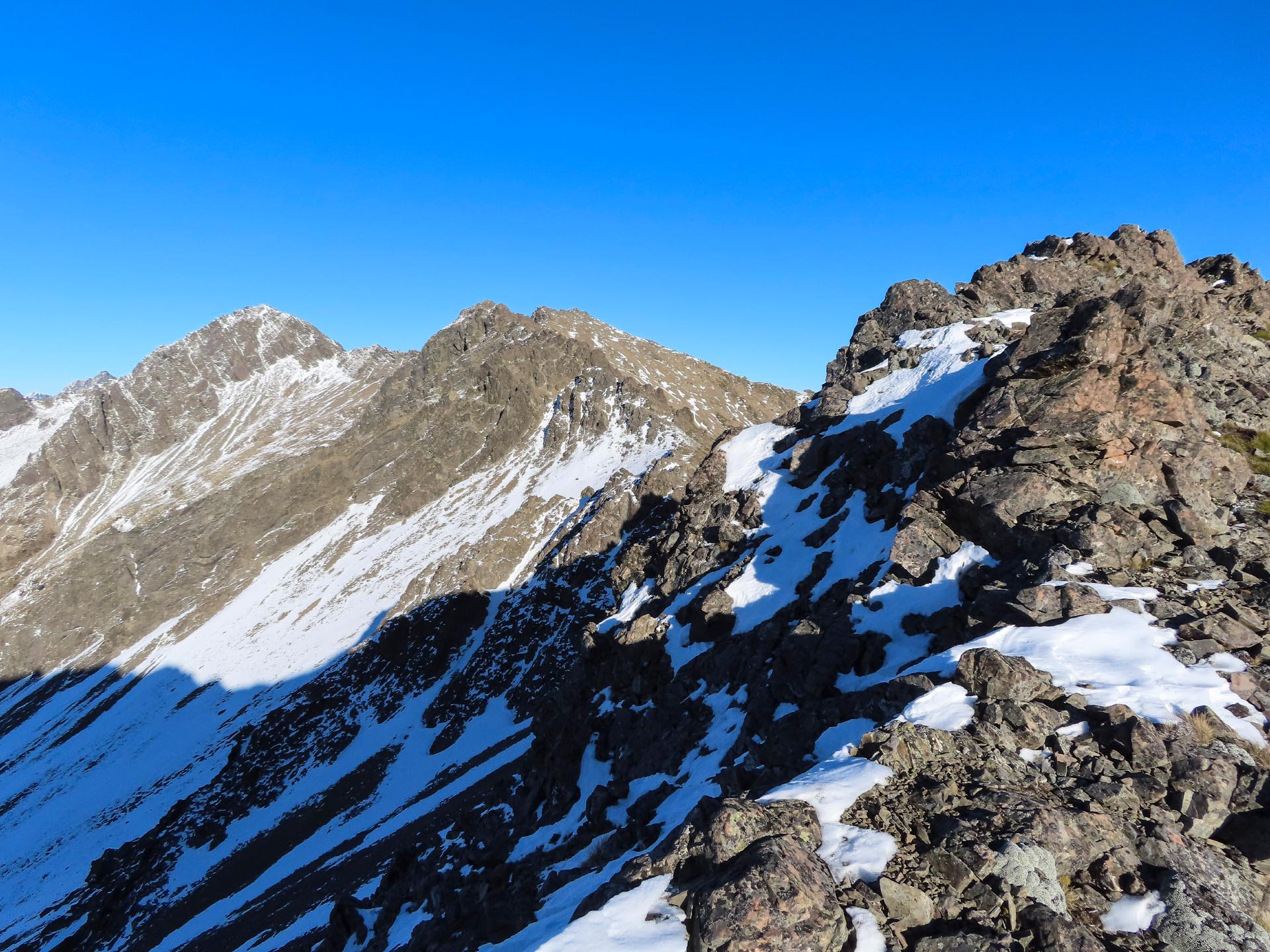
On the ridge to Bounds 2,044 m (left skyline) 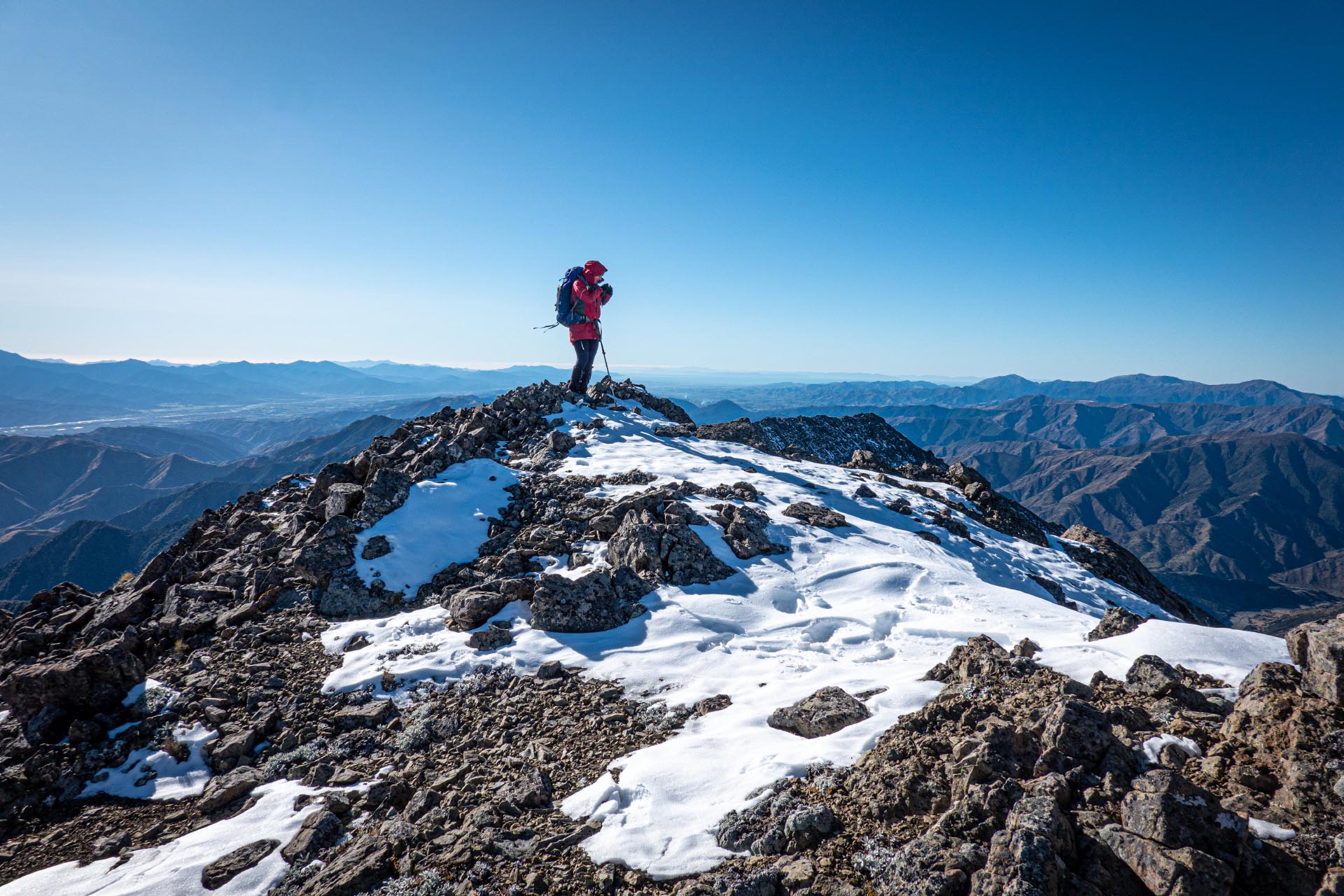
Sarah on our high point 1,951 m 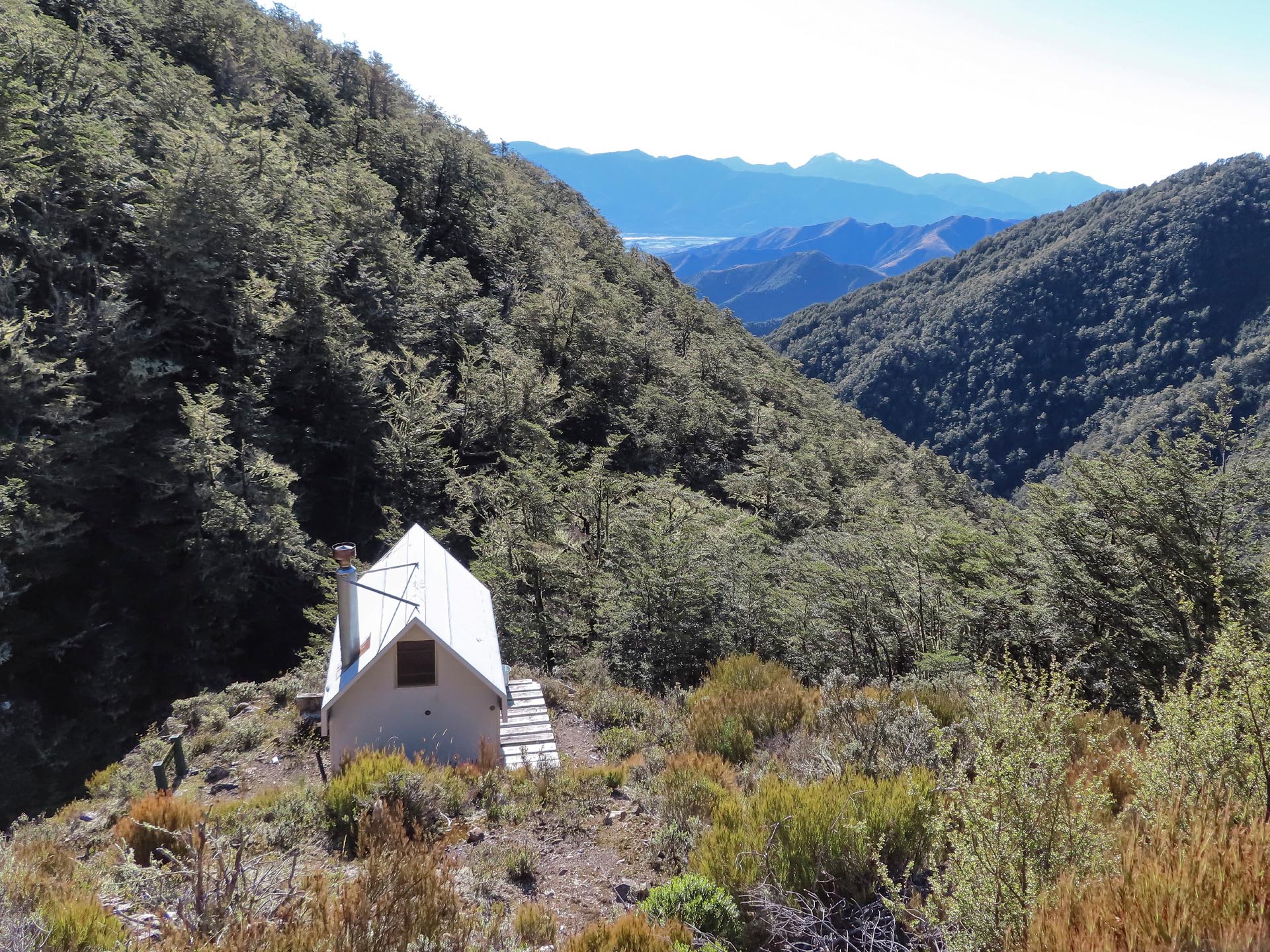
Back to the bivvy for lunch 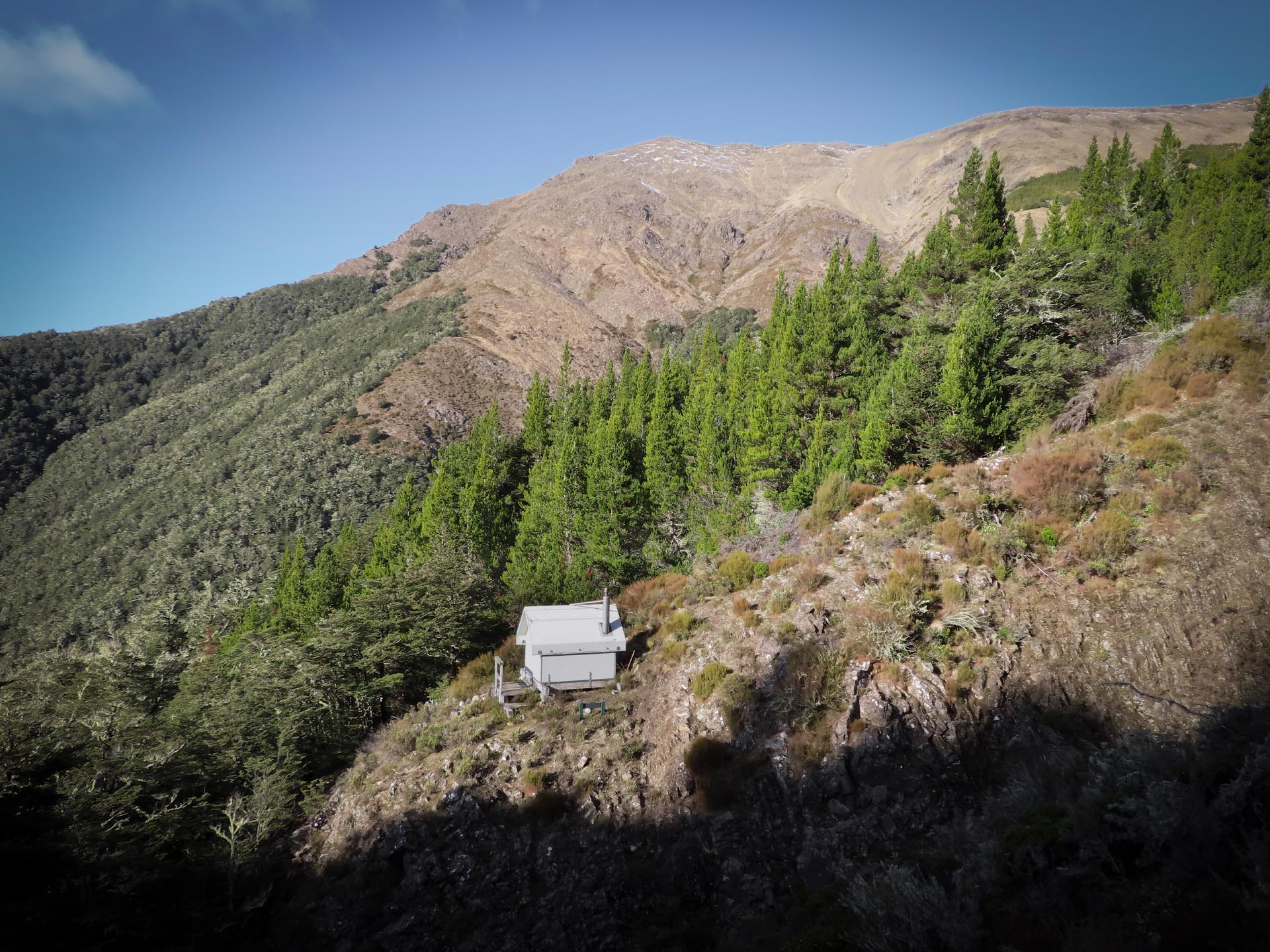
Turkeys Nest Bivvy From there it was a relaxed walk back down the hill to Hidden Hut for the night. While I was cooking dinner a wasp started buzzing around me. I ended up picking up the nearest thing I could find to whack it, which unfortunately was the hut book. Luckily Tony walked in and rescued the old book before I totally mangled it and went after the wasp with a NZ Hunter magazine he found and which seemed far more appropriate anyway—and it did the trick with a single swat!
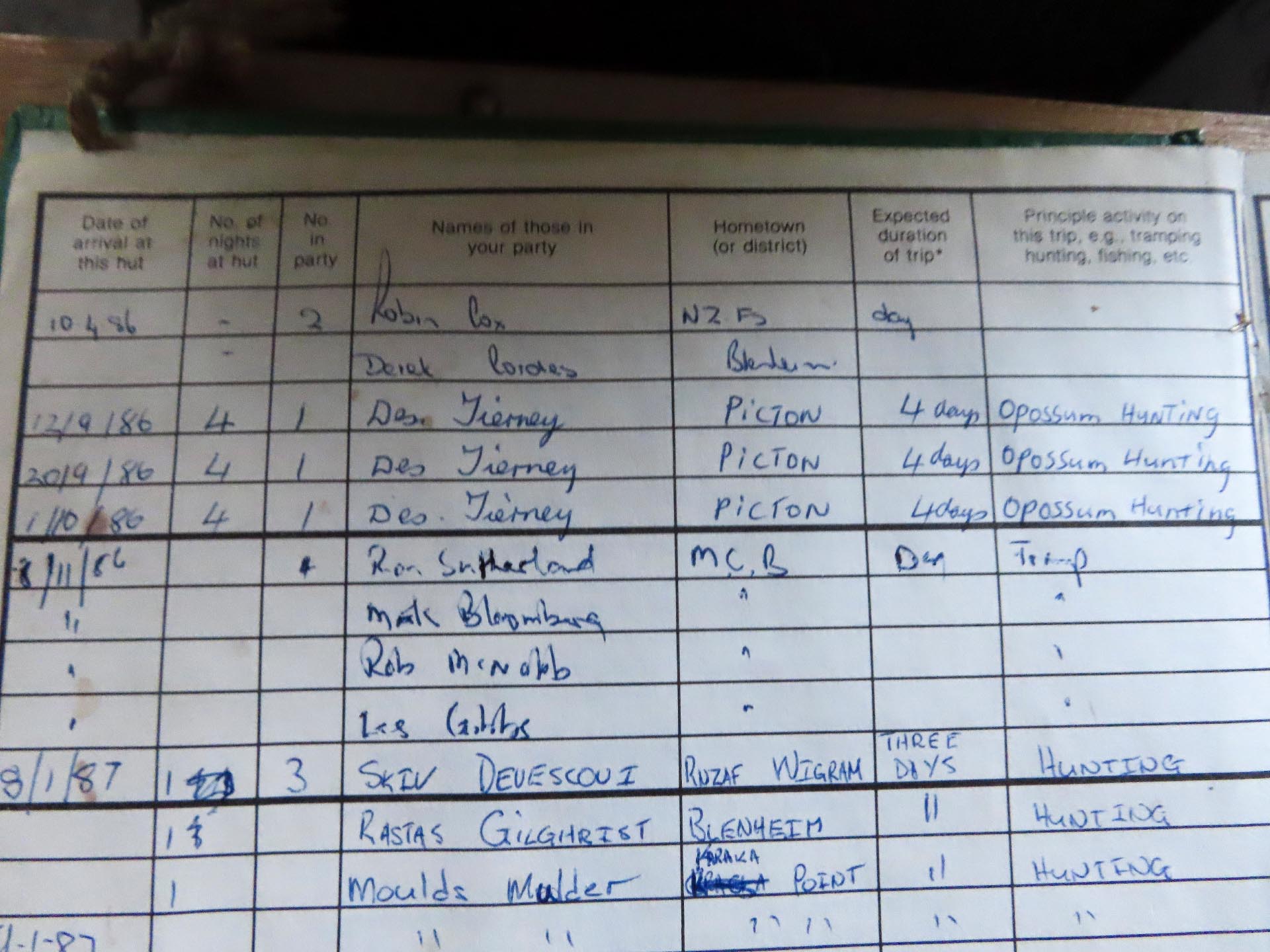
Hidden Hut logbook. Thirty six years of trips in a single book and not filled yet. 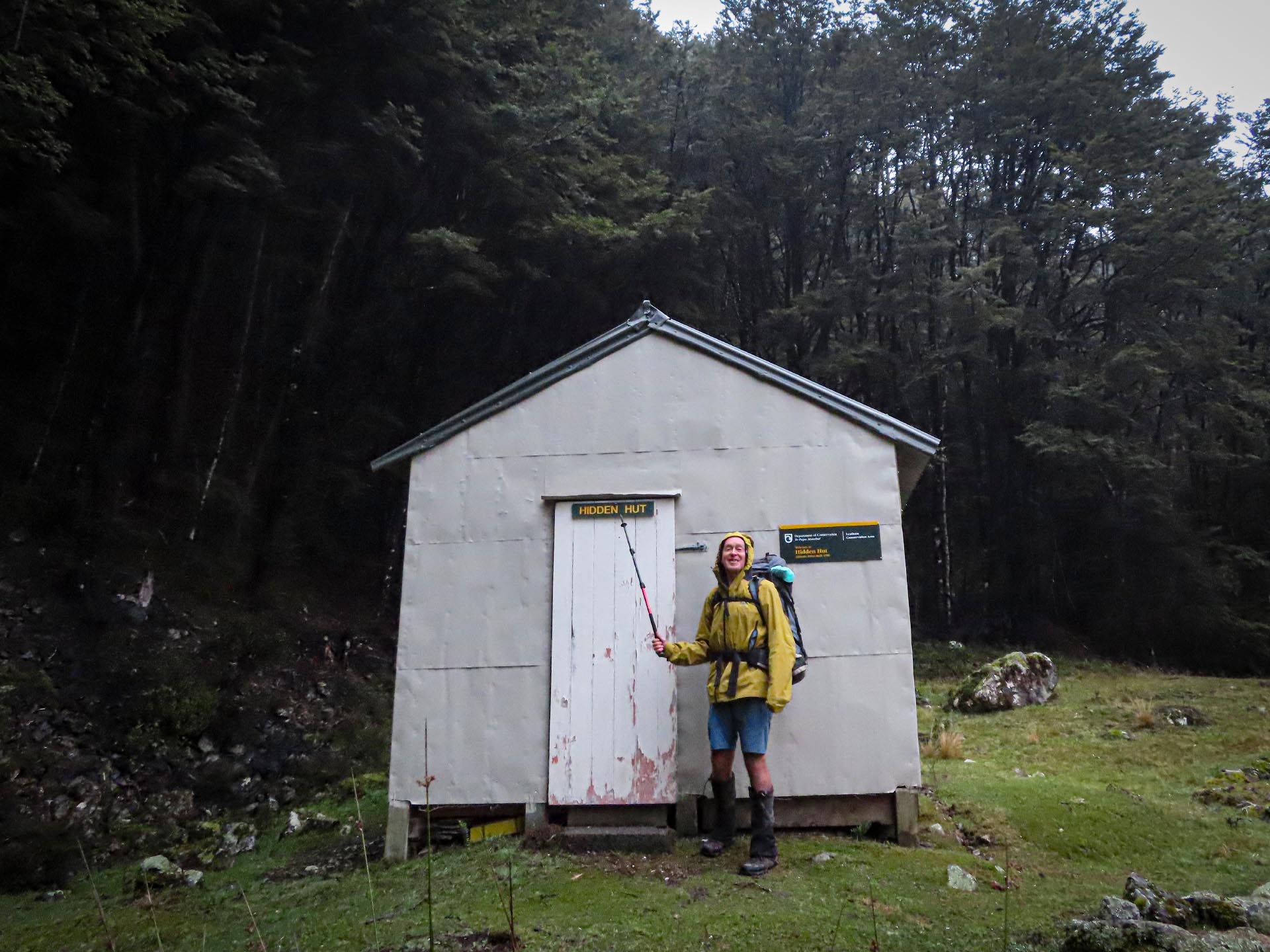
Hidden Hut 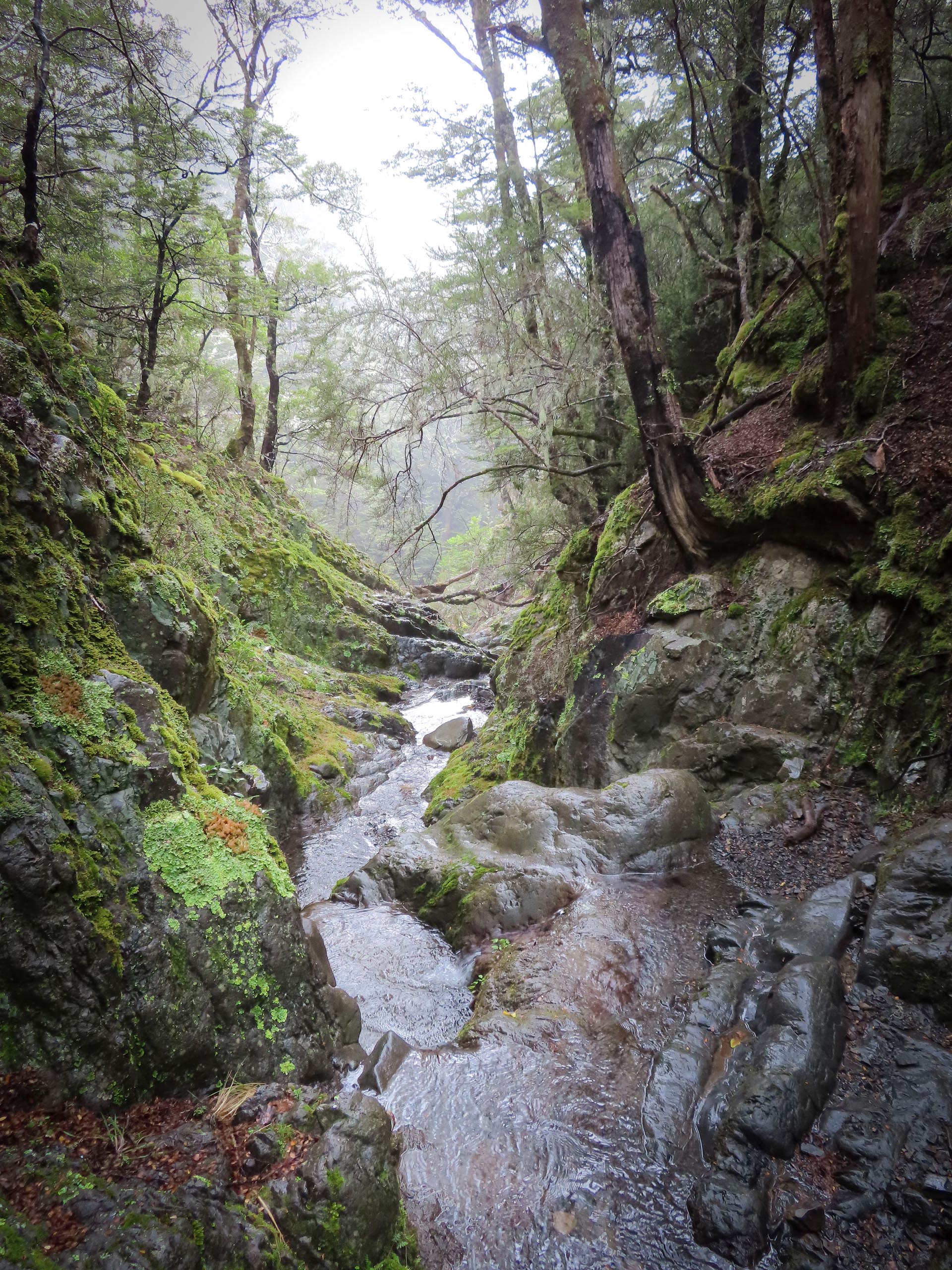
Side stream 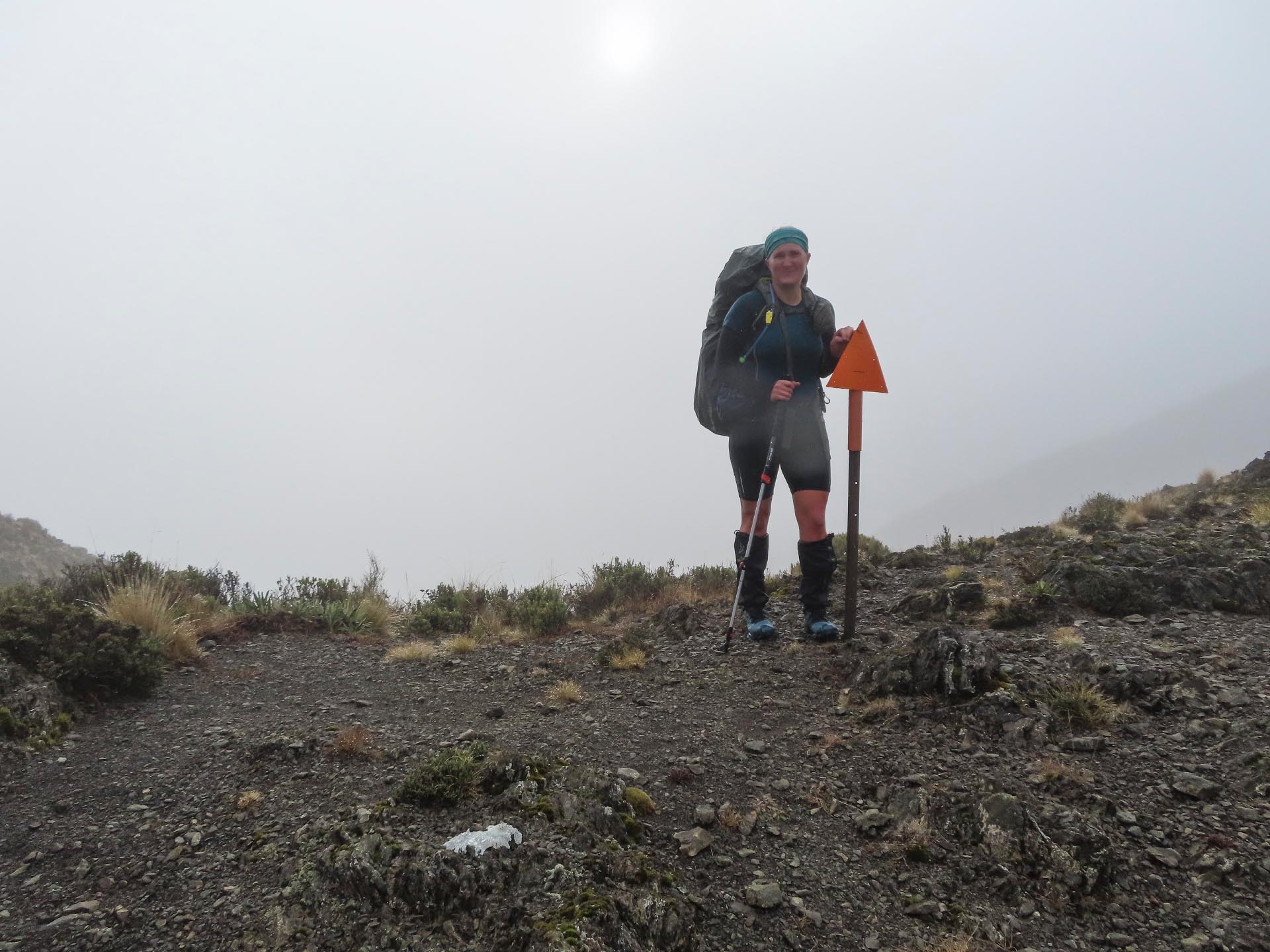
Sarah on the unnamed saddle above Wye River before the mist cleared 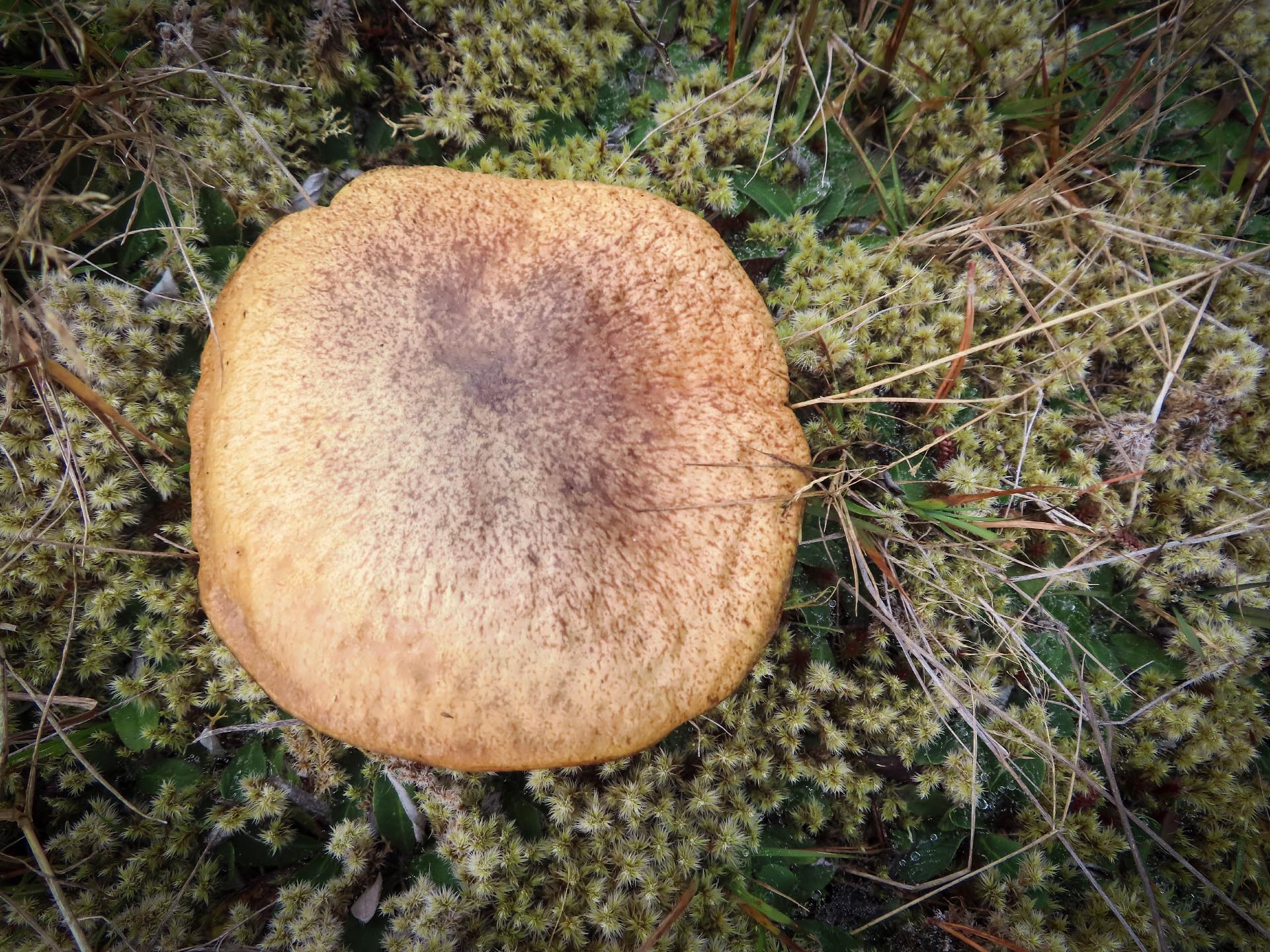
Potato mushroom 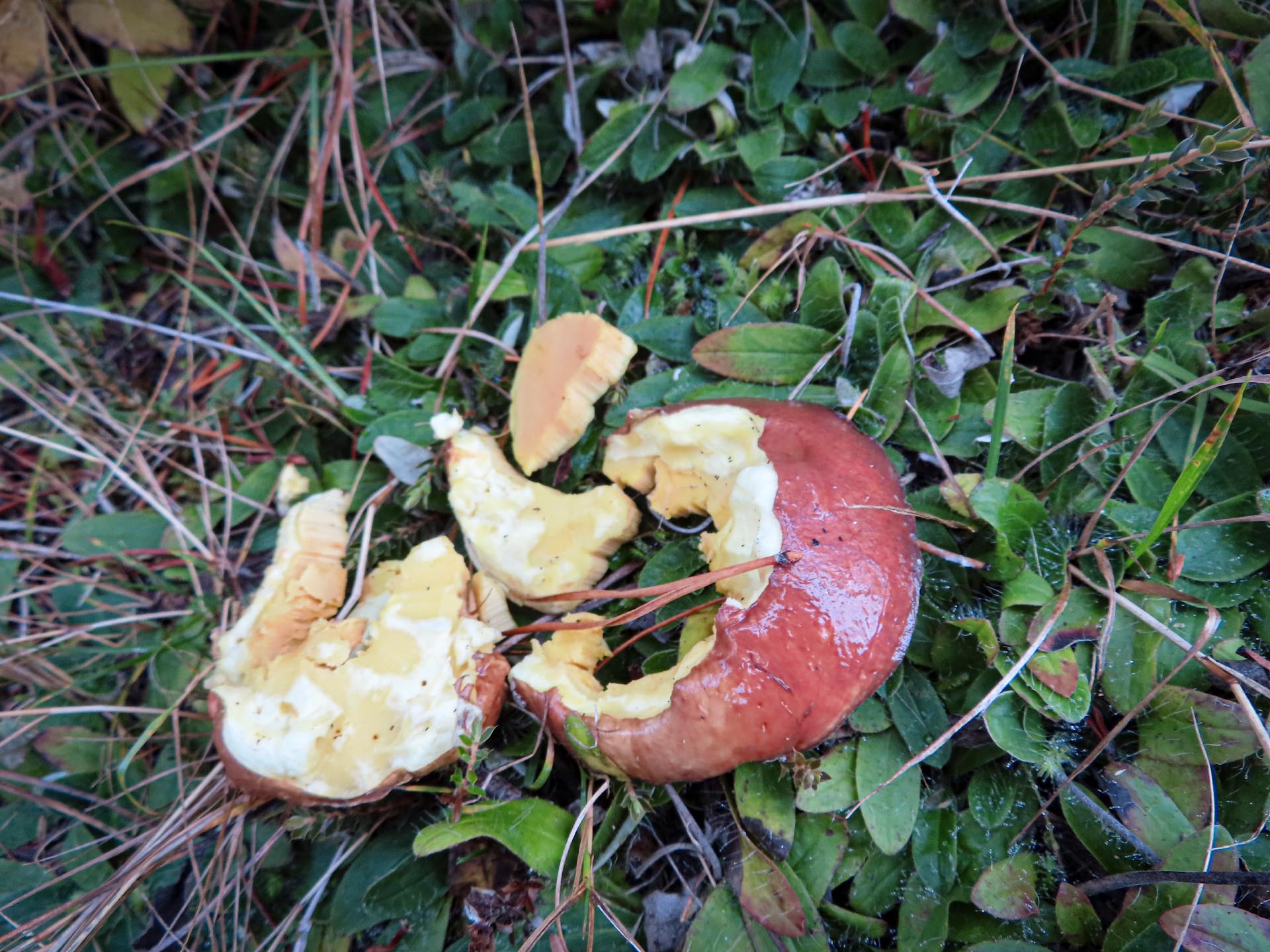
Exploding mushrooms? The walk out from Hidden Hut back along the Wye Route was different again as this time we had clag and light rain which seemed to make the green in the beech forest even more pronounced; and it was very mystical when we popped up onto the saddle. On the other side of the saddle Tony and I had fun trying to play baseball with our walking poles and snowballs. I hit one out of the ballpark while Tony was out with three strikes.
Once on the part of the Wye Route we hadn’t walked on Day 1 we started noticing lots of mushrooms. I named some ‘potato mushrooms’, as they really did look like potatoes and we also found many that appeared to have broken apart. Tony wondered if they had exploded to spread their spores and reckoned he had read something about exploding mushrooms before. This topic kept us entertained for the rest of the walk out and so much that we nearly missed the ferry in Picton because we were frantically googling exploding mushrooms. We still haven’t solved the mystery of what happened to those mushrooms.
Stats from Sarah’s watch:Day 1- Leatham Road to Turkeys Nest Biv
Distance: 20 km
Elapsed time: 10.5 hr
Elevation: 1,700 mDay 2- Turkeys Nest Biv to spot height 1,951 m; back to Turkeys Nest; Hidden Hut
Distance: 9 km
Elapsed time: 9 hr
Elevation: 842 mDay 3- Hidden Hut to Leatham Road
Distance: 15 km
Elapsed time: 7.5 hr
Elevation: 1,000 m.- This topic was modified 3 years, 6 months ago by Tony Gazley.
-
-
AuthorPosts
